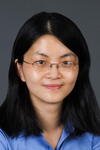Jiji Fan
The Standard Model provides a successful description of presently known particle phenomena up to scale of hundreds of GeV. Still, the Standard Model is a work in progress and could be extended to describe physics at higher energies, for instance, the TeV scale which will be explored soon at the Large Hadron Collider. In this thesis, we present several projects exploring possible new physics beyond Standard Model and their collider signatures. The first part is dedicated to a particular supersymmetric scenario characterized by cascade decays with copious lepton production. The scenario has striking signatures that can be probed by the Large Hadron Collider even in the 10 TeV run with as little as 200 pb-1 of data, provided the squark masses are about 1 TeV. Its spectrum arises in several well-motivated models and its signatures are long-lived sleptons, numerous isolated leptons, abundant Higgs production, rather energetic jets, and no missing energy. The Higgs can be discovered in the h → bb¯ mode via the 4 leptons+4 jets channel because the leptons accompanying Higgs production suppress the background. We present a low-scale gaugino mediation model that realizes the scenario and reconstruct the spectrum via several clean channels. The second part explores scenarios where the electroweak symmetry breaking sector is nearly scale invariant and consequently gives rise to a light CP even scalar particle. We study the couplings of the light scalar to the Standard Model particles that can arise from the explicit breaking of scale invariance focusing on the possible differences with the minimal Standard Model. The couplings of the light scalar to light fermions, as well as to the massless gauge bosons, can be significantly enhanced. We find possible new discovery channels due to the decays of the conformal scalar into e +e- and mu+mu - pairs as well as new production channels via, light quark annihilation. In the third part, we present a calculable ‘node! of electroweak symmetry breaking in which the Higgs doublet emerges from the meta-stable supersymmetry breaking sector as a pseudo Nambu-Goldstone boson. The Higgs boson mass is further protected by the little Higgs mechanism, and naturally suppressed by a two-loop factor from the supersymmetry breaking scale of 10 TeV. The last part discusses one Lorentz violation scheme where the spacetime symmetry is a subgroup of the full Lorentz group and atomic experiment constraints on this scheme.
